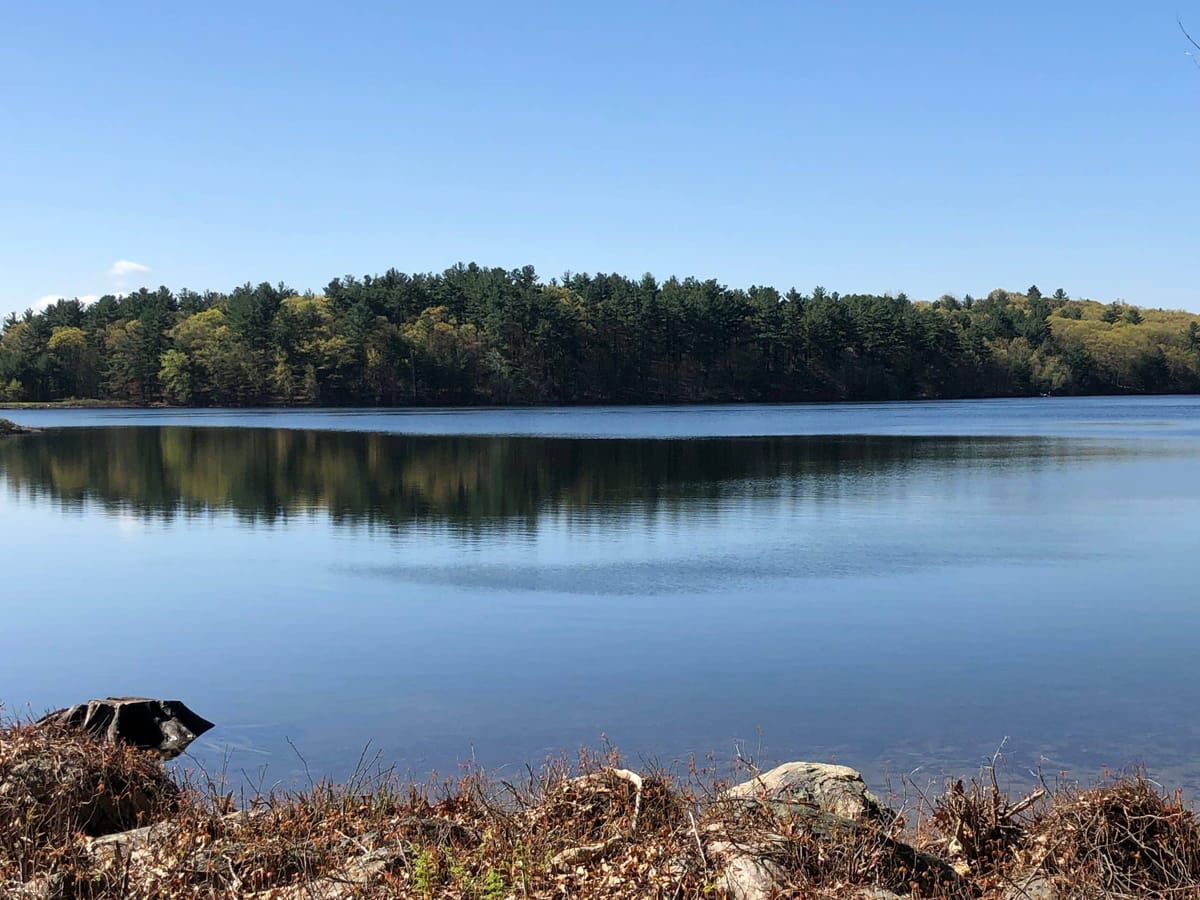Profile | Conservation Commission
Protecting our natural resources

If you’ve lived in Burlington for any amount of time, you likely know there is water flowing all around us. That’s because Burlington is situated at the beginning of three major watersheds: Mystic, Shawsheen, and Ipswich. This water provides habitats for a diverse mix of organisms, and it can also cause issues with unwanted water infiltration in properties and homes if not managed properly.
The Conservation Commission is one organization in town that attempts to help the residents and waterways and other conservation areas work in unison. This Commission, unlike elected Boards in town, is made up of seven volunteers who are appointed by the Select Board for three-year terms as well as a professional staff of five.
In this profile we’ll talk about the major responsibilities of the Conservation Commission:
- Protecting the wetlands and the town residents
- Regulating stormwater
- Taking care of the (many!) conservation areas in Burlington
Protecting Wetlands and Town Residents
Wetlands are a general name for several protected categories:
- Banks of streams
- Bordering vegetated wetlands
- Land subject to flood
- The land under the water
- Riverfront areas
- Isolated land subject to flooding
According to mass.gov, wetlands are protected because they “help clean drinking water supplies, prevent flooding and storm damage, and support a variety of wildlife.”
For this reason, there are some restrictions and additional requirements placed upon property owners who wish to build near these protected areas in Burlington. Some of these restrictions are by state law; some are by local bylaw. All of them are to protect the species living in these areas and to protect landowners from property damage due to flooding.
[Note that I am exercising enormous restraint not to go into detail about the different permitting processes and how they apply. If you do want or need this information, though, just give the Conservation office a call. They have a great staff who will walk you through the whole process.]
These requirements might include special permitting conditions, a more extensive permitting process including getting plans stamped and construction witnessed by a Professional Engineer, and the installation of proper drainage systems so water can be directed properly.
Regulating Stormwater
Stormwater is something regulated by the Environmental Protection Agency, the state, and our local bylaws. Stormwater is a major source of pollution, and the biggest issues affecting stormwater flowing into our waterways are removal of trees and disturbance of land. This creates a high potential for water and dirt to enter the street and thus the storm sewer.
Flooding is the number one issues the Conservation Commission encounters in town - often after a good rain or melt.
Much of town is on low-lying land with a high water table. And, as you can see by taking a drive around town, homebuilding has changed over the last decade. Bigger homes are being built, closer to the setbacks, with bigger basements, and requiring more land to be disturbed.
In many places where the water would have previously flowed, without proper drainage, it’s got nowhere to go and ends up being diverted onto other properties. This is one reason the Conservation Commission requires such a strenuous permitting process for land disturbance close to protected areas - to save nearby residents from flooding and water damage.
Also, a lot of town is in a relatively flat area surrounded by streams, without a lot of gravity in our favor to help the water flow away. In the past, machines have been brought in to widen streams when the begin overflowing, but there are two problems with that - first is that the habitats and animals living there are thus disturbed, and second is that it just really doesn’t help. Widen the stream all you want, if gravity isn’t helping the water flow away, all that disturbance won’t do any good.
Oh, also that’s illegal since the streams are a protected area due to the vegetation and wildlife habitats mentioned above.
Sand in the roads from winter storms also flows down into the stormwater system and causes blockages in the culverts so the water can’t flow under the road like it normally would. Periodically vacuum trucks are sent out to vacuum out this sediment.
Beaver dams are also a source of flooding, and there are some removal options which I won’t get into much here other than to say those little stinkers are hard to get rid of.
The local bylaws regulating stormwater management are currently under review. Because of the changes in building practices I mentioned above, the 15-year-old bylaws need to be reconsidered to anticipate the kinds of projects that are likely to cause problems and place more strict requirements on them for addressing stormwater and displaced water resulting from the land disturbance.
Taking Care of Conservation Areas

We have fourteen (!!) conservation areas in Burlington. Four of them are larger, with marked trails and maps, and 10 of them are smaller.
Larger conservation areas include
- Mill Pond - 140 acres
- Mary Cummings Park (which actually belongs to Boston, but that’s a story for another day) - 200 acres abutting a whole lot more recreation area in Whispering Woods and Quail Run in Woburn
- Sawmill Brook Reservation - 27 acres abutting Fox Hill School
- The Landlocked Forest - 250 acres near the Bedford line
Other areas for passive recreation are
- Little Brook Conservation Area - 36 acres
- Marion Road Conservation Area -15 acres
- Chadwick Conservation Area - 4 acres
- Fairfax Conservation Area - less than 1 acre
- Forest Field Conservation Area - 11 acres
- Ipswich Conservation Area - 3 acres
- Longmeadow Brook Conservation Area - 2 acres
- Lubbers Brook Conservation Area - 5 acres
- Muller Road Conservation Area - 3 acres
- Rock Pond Brook Conservation Area - 3 acres
- Sandy Brook Conservation Area - 5 acres
- Vine Brook Conservation Area - 22 acres
One thing the Commission tries to do is acquire land adjacent to existing recreation areas in order to expand offerings for passive recreation. Sometimes this is done by asking Town Meeting for money to purchase abutting properties, and sometimes it’s by asking developers to reserve a part of their land for conservation.
The Commission also endeavors to educate schools and the public on these conservation areas, including welcoming field trips and having regular nature walks - which you can currently find in the recreation catalog for the spring (and which I’ll do my best publicize as they come up!)
As you can see, the Conservation Commission does so much not only to protect our natural resources but also to protect the investment of property owners in town.
The Conservation Commission meets twice a month on the second and fourth Thursday, except in the summer when one meeting per month is often sufficient.
Thanks to Larry Cohen for answering all my questions, and even more I didn’t realize I had!




